Guide to Product Analytics
Why it Matters & How to Get Started When You're Not a Data Scientist
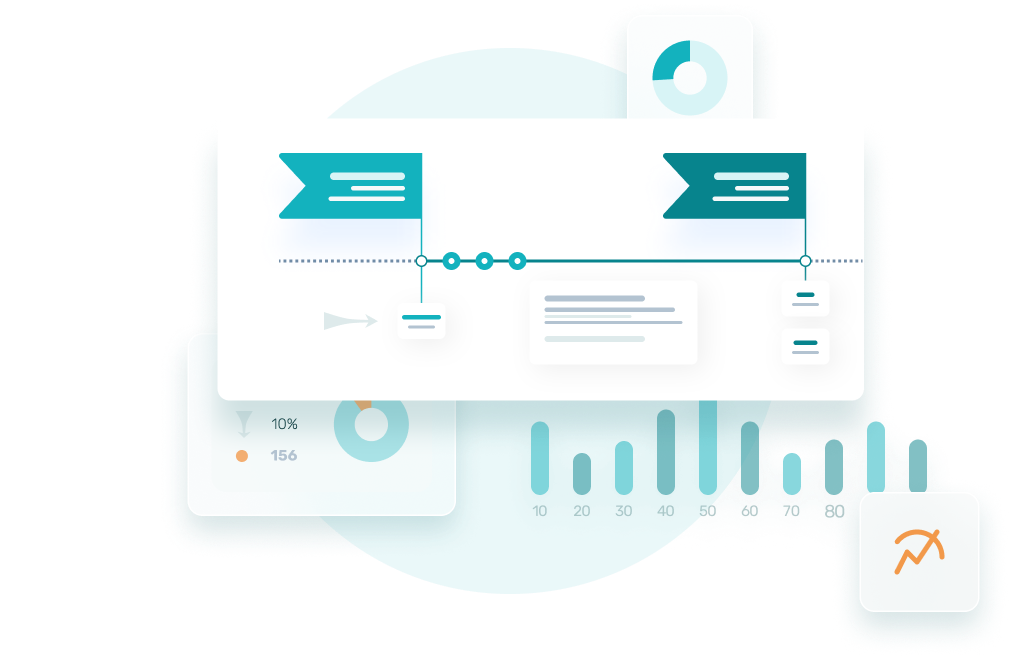
What is Product Analytics?
Imagine this: you’ve introduced your new SaaS product on the market, and you’re starting to get sign ups. It seems to be taking off 
But when you start to dig a little deeper, your product usage and revenue isn’t reflective of the growth your product is seemingly experiencing 
Your users don’t finish onboarding. You don’t know where they’re dropping off during the process, and you don’t understand why 
All of a sudden, you feel like you’re in the dark. What can you do to better understand how your customers interact with your product? Where do you even begin?
If you’ve ever asked yourself these questions, you’ve come to the right place 
The answer? 
The universal objective of product analytics is to continuously track your customers from the moment they discover your product and understand how to optimize the product to have a high conversion to revenue and referral.
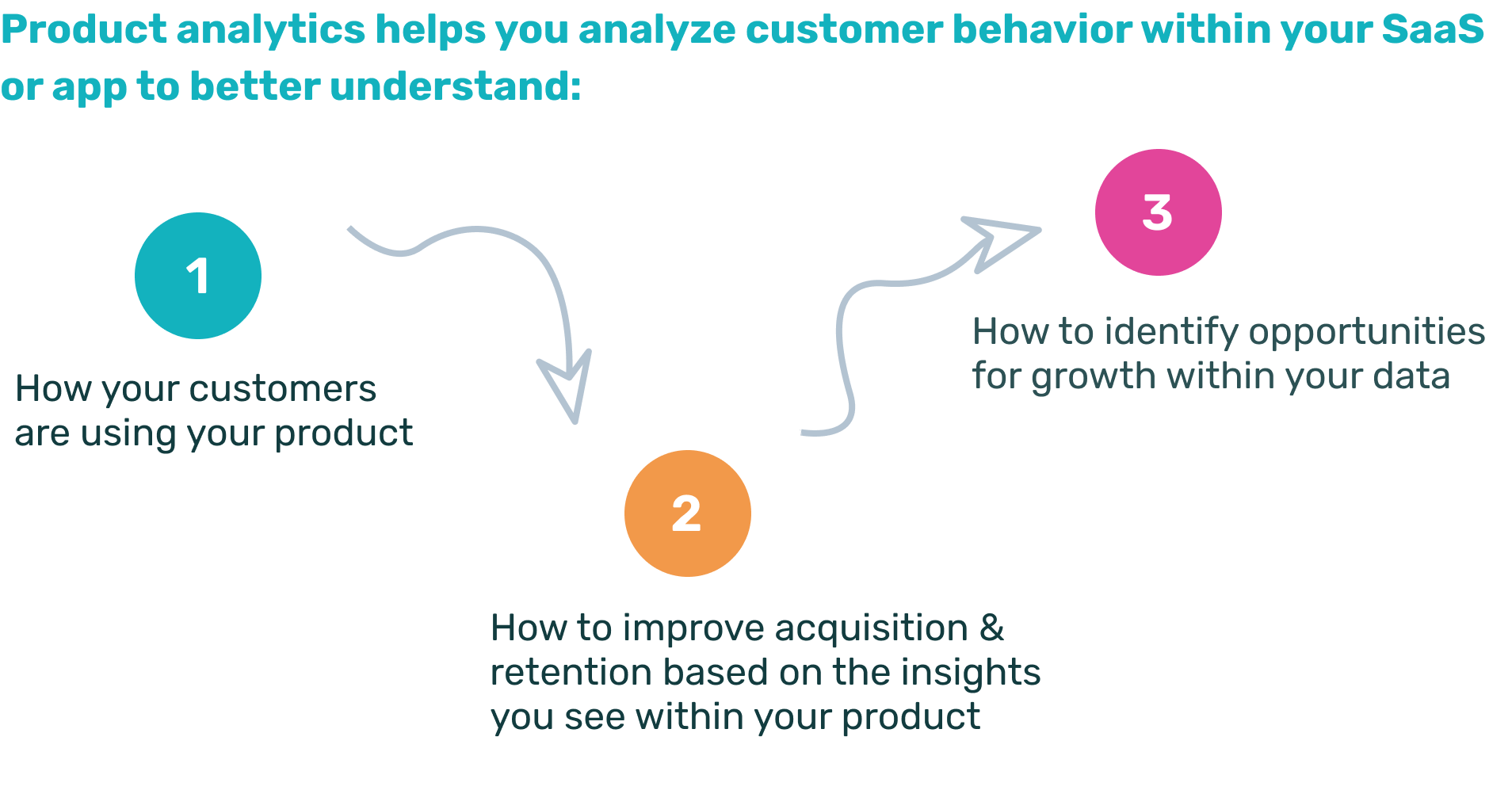
In order to get meaningful insights from product analytics and help you head in the right direction, a key prerequisite is to collect and map the data correctly.
However, more often than not, this doesn’t happen, because it’s actually a hard thing to do.
With a solid tracking plan and a good framework for how you set up your product analytics, you’ll be off to a strong start. Read on to explore how you can do this.
Why is Product Analytics important?
Let’s put it like this: when your SaaS product grows beyond a certain number of users (usually hundreds), you need to have a product analytics tool in your martech stack.
Here’s why:
 There’s a ton of data to organize and understand
There’s a ton of data to organize and understand
You’ve seen it with your product, too; there is more data to be collected from more sources than ever before. Product analytics will make sense of your product data where manual work and interpreting spreadsheets won’t cut it.
 Products are quickly evolving in a cut-throat, competitive market
Products are quickly evolving in a cut-throat, competitive market
Users are more tech-savvy, and are on the hunt for the best product to meet their specific needs. Product analytics will help you analyze and learn how the product performs across all of the customer journey stages, and understand the impact of product changes you make to stay competitive as you’re looking to constantly optimize your product.


 There are a multitude of marketing channels
There are a multitude of marketing channels
Or ways in which a user can land on your site or product to keep track of – we all know that. But how well are those channels performing? We’re not talking about click throughs and conversion rates. We’re talking about customer retention, way beyond your acquisition stage. Product analytics is again the one to give a helping hand here by segmenting customer behavior based on the acquisition channel and getting insights based on the traffic source.

 Non-linear buyer behavior
Non-linear buyer behavior
While we certainly wish that all users would take the exact same path from first interaction to sign up to payment, the truth is that very few users will follow the same path to conversion. Product analytics transforms chaotic user behavior that’s almost impossible to drive insights from into linear customer path analysis that makes it much easier to find growth opportunities.
 The focus on customer retention is increasing
The focus on customer retention is increasing
Especially since the costs of acquisition are on the rise. Product analytics enables you to dig into the real causes of churn as well as provide insights into what drives higher retention.
 Your customers need outcomes
Your customers need outcomes
Product analytics will help you understand how to get your customers to best achieve the value that your product offers. “Best” meaning in an optimal timeframe for each individual or company’s context and needs. Product analytics will help you know who gets your product’s value, and what stops those that don’t.
 Product-led growth is on the rise, and product analytics is fueling it.
Product-led growth is on the rise, and product analytics is fueling it.
The product-led growth model is the business strategy behind many of today’s most lucrative and strongest SaaS companies, because it focuses on providing the customer with the best user experience possible. There’s no more agile of a way to learn about your customers than with product analytics. Even your sales and customer success teams can benefit from product data in a product-led approach.
Who should use Product Analytics?
There are many roles that can greatly benefit from using product analytics for their SaaS or digital product:
Some of these roles benefit from insights directly – especially product managers and marketers. Others get insights and notifications via automation, or hooks – sales, CS. Data scientists are also supporting roles that crunch data and then feed insights to business teams.
The tendency on the market today is for product and business roles to get first-hand insights from product analytics (instant gratification!), meaning that the product analytics tools need to be intuitive and easy to use, providing actionable insights.
Let’s dive into some roles that are primary beneficiaries of product analytics and use it most.
- Product Managers: A data-driven product manager is going to develop a product customers can truly benefit from. Why? Because any and every decision they make regarding feature development or general business strategy will be backed up by data insights and research! No more guessing what your customers want from your product, what’s working, and what’s not. The answers are all in the data.
- Growth Hackers: Combine growth hacking strategies with insights from product analytics, and increase the speed of reaction to market needs. Event-based data will track every detail, no matter how big or small, of how your customers interact with your product, informing you of your users’ wants and needs and enabling you to produce a better product.
Of course, user testing and in-depth qualitative customer interviews are great tools, but they take time (a lot of time!) and resources, and results can be subjective or biased.
Product analytics offers unbiased, quantitative research that can help with understanding product usage, progress made so far and, most importantly, uncovering insights for future optimization and growth.
- Product Marketers: A product marketer’s goal is to generate demand for a product from target customers through accurate positioning, messaging, and sales. The data insights you gather at each stage of the customer journey will help you understand the needs of your users and direct decision-making; once you know exactly what value your customers seek, you’re able to apply it to your product and deliver it to them.
- Marketing: As digital products and experiences continue to dominate the SaaS landscape, the customer journey is becoming increasingly complex. Marketing teams can use product analytics to break down the customer journey and understand what acquisition channels are performing best, not only in terms of sign-ups, but also revenue and retention.
- Sales and customer success, in a product-led approach: Your sales team’s overall goal is no longer to identify new customers who could benefit from your business’s product, but to focus on those that are already trying it by themselves.
Product analytics can feed information into sales management tools, which sales teams can then use to decide who to talk to and how to talk to them. They’ll already know who is using the product, how they’re using it, and who is ready for an upgrade.
Similarly, your customer success team can greatly benefit from a product-led approach. With the insights gathered from your data as to how customers are interacting with your product, they can proactively identify where your customer may run into problems, so that customers don’t even need to reach out to support for help. You’ll already be one step ahead of them.
Product Analytics vs. Web Analytics

Every marketer has heard of and is using web analytics tools, especially since Google Analytics is free and readily available. However, its younger sibling – product analytics, the new kid on the block (well, not so new anymore) – has become indispensable, especially in the SaaS world. There are many differences between product and web analytics. We’ve broken down the key ones here for you:
If you’re a SaaS company – especially B2B – looking to track and understand account-based behavior and analyze the whole funnel, all the way to retention and referral, product analytics is the right way to go.
This will help you avoid misleading insights that cookie-based and session-based might deliver.
Getting Started with Product Analytics
Before you take the plunge and get started with a product analytics tool, let’s make sure you’re set up for success! Here are a few key questions you’ll want to have answers to beforehand to get the most out of your data:


 Does your product have enough users?
Does your product have enough users?
You need to have at least a few hundred users, even if they are “customers” on free plans. Otherwise, the numbers are too small and the insights may not have statistical relevance.
 What do you want to measure?
What do you want to measure?
Before any data is collected, you need to map the customer journey with all of the touchpoints where users interact with your product and business.
A customer journey metrics map is crucial because it forces alignment within your company on what defines each stage of the customer journey, what the requirements are for your customers to benefit from the value of your product, and what that value is (believe it or not, two people from your company can have different views on this – just go ahead and ask!).
 How do you plan to collect data?
How do you plan to collect data?
Once you’ve defined your customer journey and the most important metrics you should look at, the next logical step is to create a data tracking plan.

At a high level, the tracking plan contains information on:
-
Events that pertain to any of the customer journey pillars – acquisition, activation, etc. – what users or accounts perform at each stage;
-
Event properties that give you the context of the events being tracked.
-
User and account identifier elements, such as ids, email addresses, etc.
-
User or account properties that enable segmentation.
The events and properties tracked are clearly defined and documented so that the whole team knows what’s being tracked and how.
The tracking plan becomes tracking documentation for the dev teams, making it very easy for them to deliver an accurate setup.

Key metrics you should track with product analytics
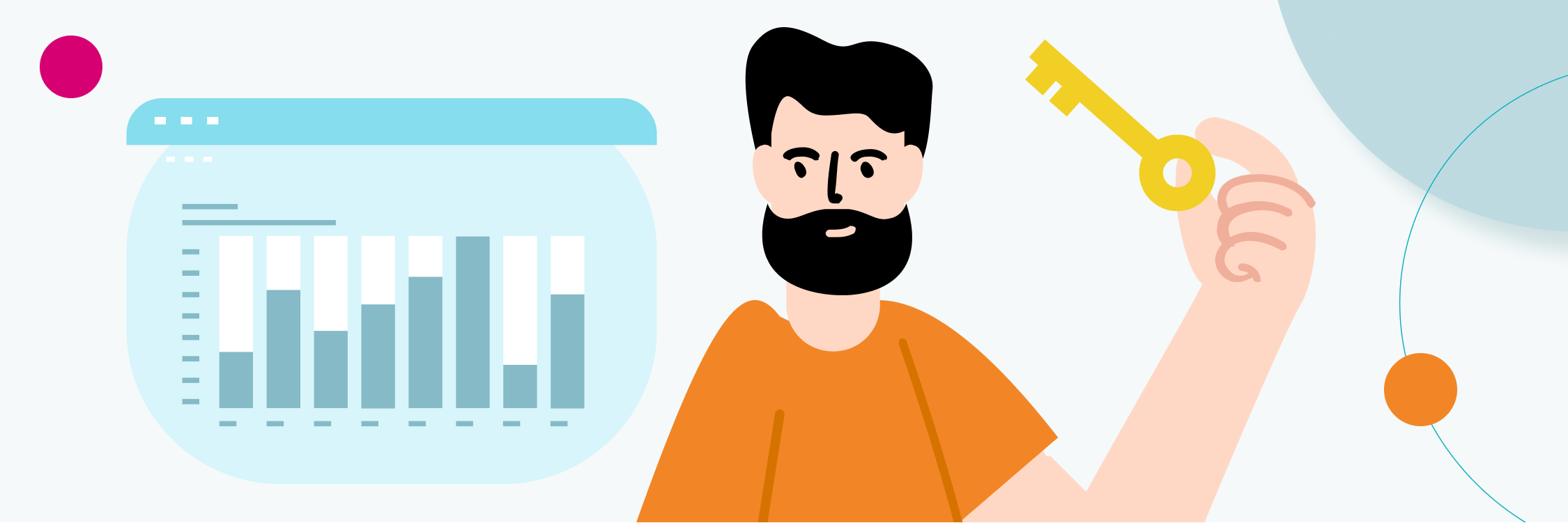
The goal of a product analytics tool is not just to track product metrics, but rather, to understand your product and users well enough to provide optimization insights.
But before you dive into measuring product success, you need to make sure you’ve got your customer journey metrics definitions right. Many companies either don’t have the correct definitions, or are not aligned on them across departments.
At InnerTrends, we split metrics into two buckets:
Universal metrics
These are the classic metrics that everyone is familiar with. They’re useful in the context of reporting or start-ups looking for investors, but be careful not to fall in the trap of vanity metrics, or tracking metrics purely for the sake of tracking.
Examples:
- Website conversion rate
-
Renewal rate
Contextual metrics
These metrics arise when you describe something that could look different from one company to another, or the underlying definition is different.
Examples:
- Onboarding conversion rate
- Funnel drop off rate at each step of the onboarding process.

Here are some benchmarks from InnerTrends’ data if you really want to have a reference point:
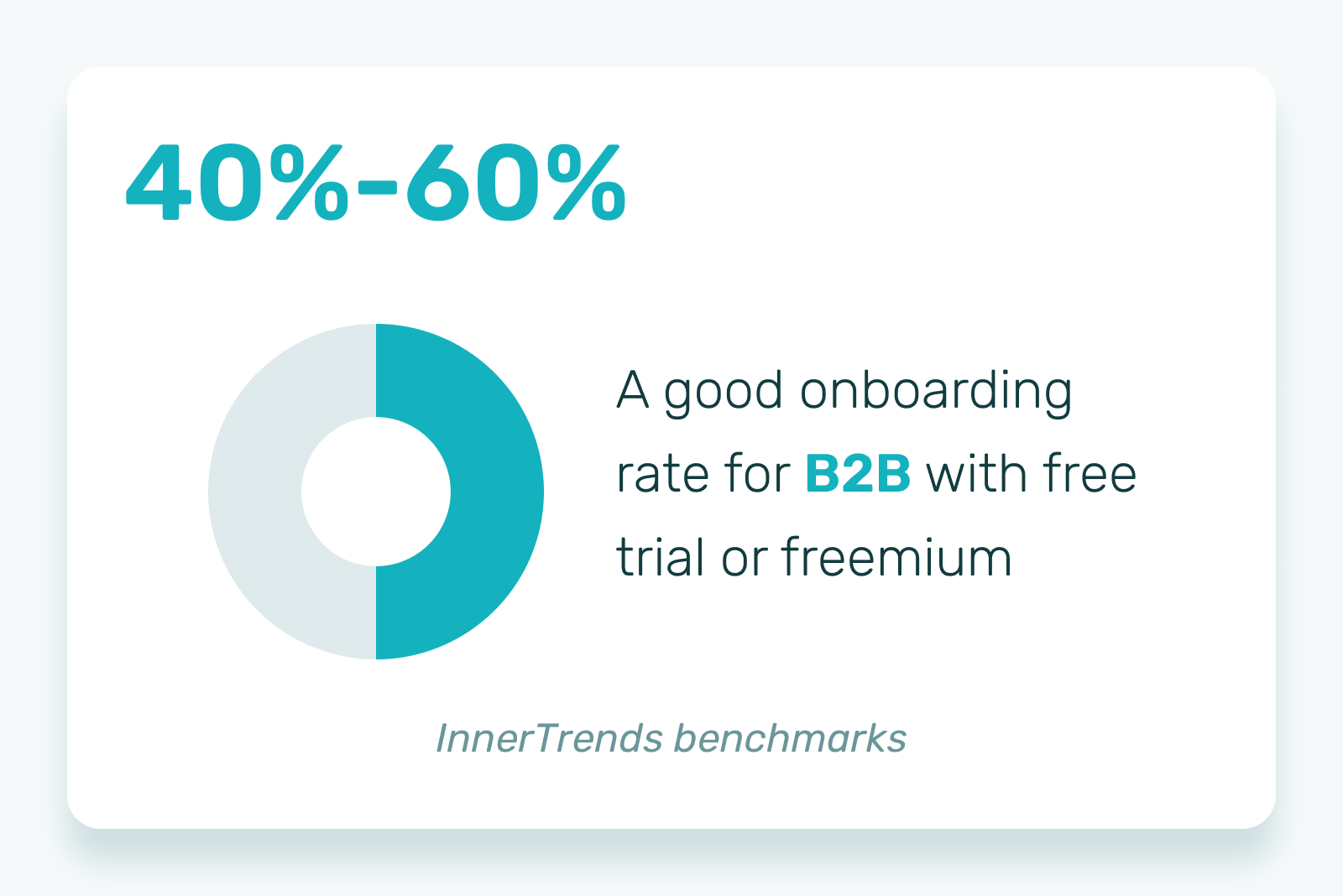
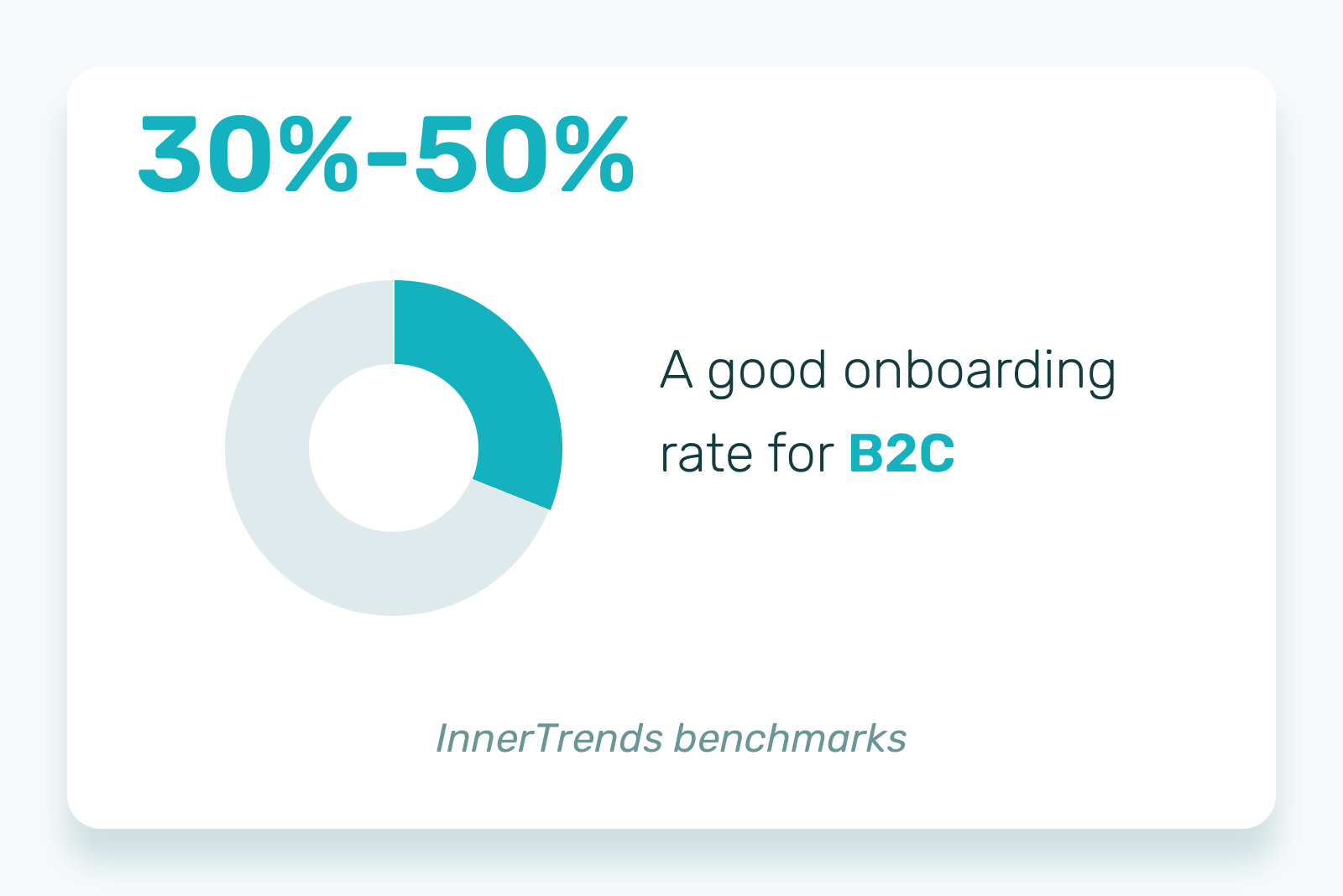
We’ve only just scratched the surface of what contextual metrics mean and how you need to look at them above – we strongly encourage you to dive deeper into this topic here in this dedicated article on product analytics metrics.
Product Analytics Tools
As product analytics continues to become more widely practiced throughout the SaaS industry, more and more product analytics tools are becoming available for SaaS businesses, no matter how much expertise (or lack thereof) you and your team may have in the area.
With such a wide variety of tools available, all having different strengths and weaknesses, it can be overwhelming trying to figure out which tool best meets your needs.
To help you get a feel for the different product analytics tools out there, we’ve done the research for you! Here’s a short list of tools you’re likely to run into as you explore your options, and a few key points as to why they may or may not be the best tool for you.
Mixpanel
Mixpanel is one of the most known product analytics tools out there. You can use it to create customizable dashboards to track data in real time based on the metrics you want to measure. On top of that, you can even see the dashboards your team is working on, which makes team collaboration easy.
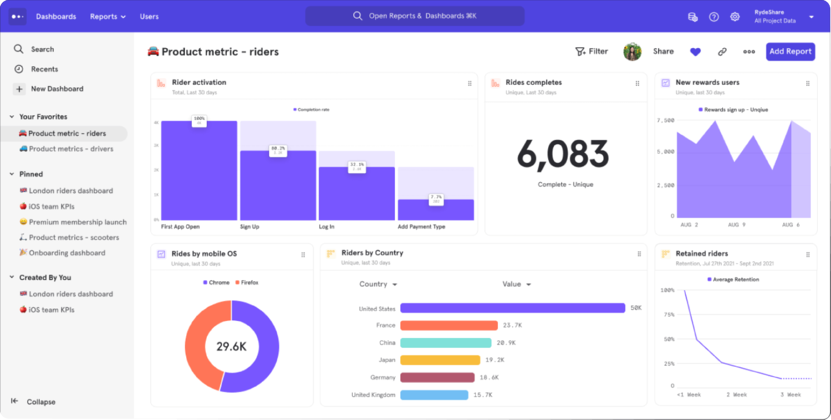
Try Mixpanel if:
- You want to have a deep understanding of user engagement with your product, from funnels and retention drivers to impact of experiments.
- You want customizable dashboards based on your KPIs for your web and mobile applications.
- You can easily define custom Key Performance Indicators (KPIs).
- You want to take advantage of tools like automated emails and push notifications to interact with your customers.
Avoid Mixpanel if:
- You’re not a data scientist (or don’t have one to guide you), and don’t want to spend a lot of time figuring out how to create the right dashboards or reports for your business.
- Your needs expand beyond the free plan and you don’t have the budget to support the higher tiers.
Amplitude
Amplitude is a comprehensive and intelligent product analytics tool that will give you a lot of integration options and customizable dashboards to work with. They are the most feature-loaded tool out there, so you can be sure you’ll find the right dashboard to track what you need for your business.
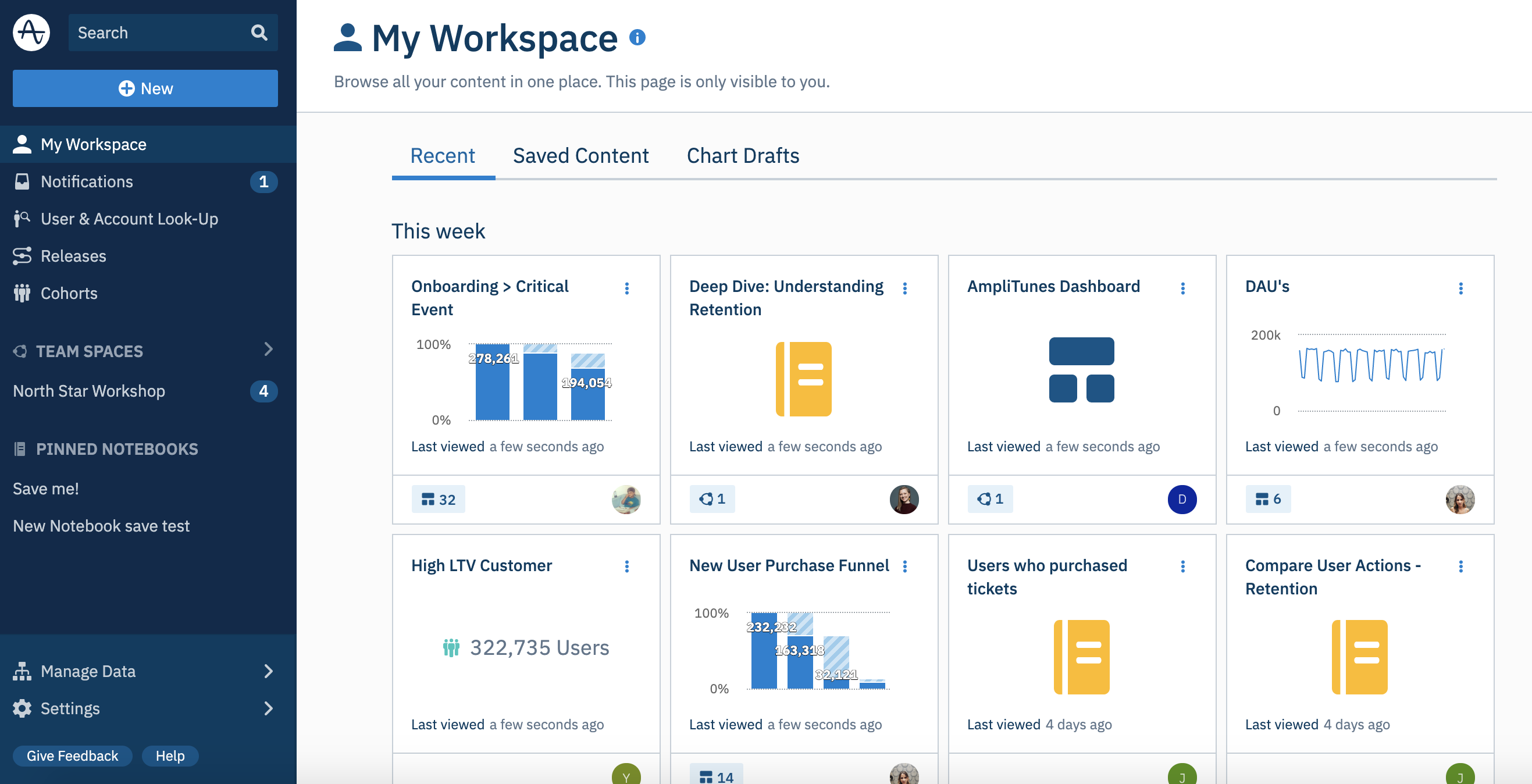
Try Amplitude if:
- You need a powerful tool that has loads of customizable dashboards and real-time event streaming.
- You need complete visibility of the user experience.
- You have developer resources to ensure the setup is done well and the tracking is running perfectly.
Avoid Amplitude if:
- You don’t want to spend a lot of time finding and fine-tuning the right report for you. Amplitude has a fairly high learning curve overall and report customization takes time.
- Same as with Mixpanel, the free plan is attractive but the bill can run high very quickly when upgrading to higher tiers.
InnerTrends
InnerTrends is a great alternative to the classic analytics tools out there for two key reasons:
- It comes with pre-built reports, giving you fast, actionable insights for your product, without getting bogged down with building extensive reports and dashboards.
- It offers guided set-up. Setting up a product analytics tool can be complicated, and if you don’t have data analysts and dev resources you can tap into as a product manager, you may feel overwhelmed with this task.

Try InnerTrends if:
- You don’t want to spend unnecessary time building or customizing reports. InnerTrends comes with all product analytics reports pre-built for you.
- You’re unsure about the data tracking setup and don’t have the resources on your team or an agency to help you with this.
- You have a B2B product and want to analyze things at an account-based level from day one, even on the free package.
- You want actionable insights “spoon-fed” to you. Simply select a question in InnerTrends’ “Insights” section and get recommendations on what you need to do to optimize your product.
Avoid InnerTrends if:
- You are willing to invest the time in hyper-customizing your reports.
- You are looking for super-granular KPIs and customizable dashboards for internal reporting.
Challenges with Product Analytics
Successful product analytics implementation and usage can be a heavy feat; but if you know what’s coming and plan ahead, you can easily overcome any of these challenges.
Here are a few challenges we see businesses run into:
It’s hard to trust the data
The quality of your data tracking needs to be thorough: What’s being tracked? How is it being tracked? How is it being maintained? If you don’t know what data is captured, you won’t trust the data, and even if it is accurate, you wouldn’t know that it’s accurate.
Tip: Have a solid data tracking plan in place.
You don’t know what to do with the findings you get
Actionable analytics is the process of transforming customer behavior analytics from informational to actionable, and is often the missing piece of the puzzle from the majority of existing analytics solutions.

Querying the data is difficult if you’re not a data scientist
Many analytics tools on the market today tout all of the different ways to slice and dice the data with dozens, if not hundreds of ways to filter, segment, and cohort. Unless the members of your team are experienced with each of these dimensions, the wrong queries can lead to wrong conclusions.

Finding insights is not intuitive with most tools
Most analytics tools on the market will leave you to determine how to find insights on your own; the analysis required to find insights is difficult to perform unless your team has training in data science.

Deepen your knowledge with these product analytics courses
Whether you’re brand new to the industry and looking to learn the basics of product management, or a highly successful product manager who uses analytics in their daily routine, the product analytics industry is constantly evolving; and, therefore, there’s always something new to be learned.
Guides such as this one, as well as blogs and additional resources are a great way to get started with Product Analytics. But if you want to dive even deeper and are looking for a specific course, you can check out a list that we compiled of 
Product Analytics Trends 
The future of product analytics is bright 
- More advanced analytics will emerge, with a shift from query-based to algorithm-based analysis: To get answers to advanced questions from your data, you need to perform advanced analysis. We’ll likely see a shift from query-based analytics, where we simply go and query the data to get a visualization, some metrics, and dimensions, to an algorithm-based analysis, where you take multiple data sets and apply algorithms to find correlations, influence, or even causation.
- The emergence of opinionated analytics: Business people want to understand insights fast, and in a self-serve model. Opinionated analytics tools will provide an easier learning curve and more consistency by offering pre-built reports with ready-made algorithms to apply on your existing data, allowing for faster business decisions and quickly understanding their impact.
- Product analytics will be more closely linked with web analytics and customer success: Product analytics is about analyzing what people do inside the product, but the quality of the people that sign up has a huge impact on how the product is used. The product and marketing teams need to be brought together, while being helped to make sure that they’re bringing the highest quality leads, and that the product delivers on the promises that the marketing team is making to its audience.
- Account-based product analytics to be offered by default: Analyzing user-based activity for a B2B SaaS business that allows multiple users to manage the same account can lead to wrong interpretation of the data, and nobody wants to lose time or money only to arrive at the wrong result.
- Higher data accuracy achieved with product analytics linked to the source of truth: People want to achieve higher data accuracy because they’re starting to use the data in targeting. We’ll likely see a merging of the server-side tracking, or the backend tracking, for at least part of the data in the product analytics tools, because it can offer 100% accuracy, and more teams will start to trust the data in their product analytics tools.